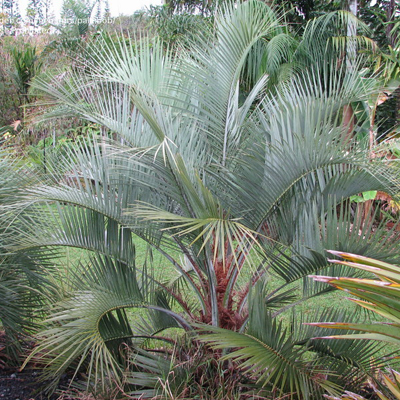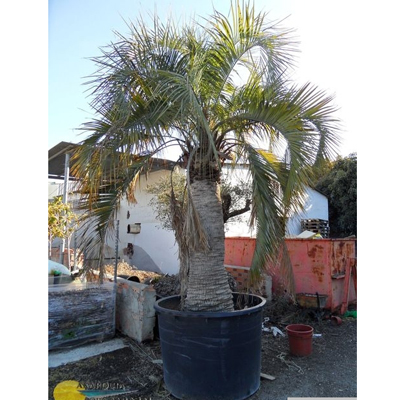Woolly jelly palm (Butia eriospatha) 5 seeds
Butia eriospatha - Woolly Jelly Palm
A species from the south of Brazil, similar to the Butia capitata palm. It has large bracts, the outer surface of which is covered with a thick, brown, woolly coat similar to a sheep's coat. Its purple flowers open in early summer. Its appearance is graceful and elegant, making it a very popular variety in w...
Long description
Shipping
block
A termék most nem kapható. Később még valószínűleg elérhető lesz.
Butia eriospatha - Woolly Jelly Palm
A species from the south of Brazil, similar to the Butia capitata palm. It has large bracts, the outer surface of which is covered with a thick, brown, woolly coat similar to a sheep's coat. Its purple flowers open in early summer. Its appearance is graceful and elegant, making it a very popular variety in warm climates.
BUTIA
The palm family (Arecaceae) includes 8 species of palms native to the tropical and subtropical regions of eastern South America. Their drooping palm leaves are composed of two rows of narrow, stout leaflets. Their sturdy trunks are surrounded by dead leaf debris, which falls off as they age, leaving a dense, circular, greyish pattern in its place. The fruit is edible and used to make wine.
Cultivation:
A variety that is particularly suited to a warm, humid climate. As a deep-rooted plant, they tolerate surface drying of the soil well.
Minimum temperature: -5°C
A species from the south of Brazil, similar to the Butia capitata palm. It has large bracts, the outer surface of which is covered with a thick, brown, woolly coat similar to a sheep's coat. Its purple flowers open in early summer. Its appearance is graceful and elegant, making it a very popular variety in warm climates.
BUTIA
The palm family (Arecaceae) includes 8 species of palms native to the tropical and subtropical regions of eastern South America. Their drooping palm leaves are composed of two rows of narrow, stout leaflets. Their sturdy trunks are surrounded by dead leaf debris, which falls off as they age, leaving a dense, circular, greyish pattern in its place. The fruit is edible and used to make wine.
Cultivation:
A variety that is particularly suited to a warm, humid climate. As a deep-rooted plant, they tolerate surface drying of the soil well.
Minimum temperature: -5°C
| Weight: | 0.025 kg |
|---|---|
| Width: | 3 mm |
| Height: | 100 mm |
| Length: | 150 mm |
| Aviability: | 1-4 nap |
| Basic sales unit: | db |
Login
Login or registration with a social account
Login
Login or registration with a social account

